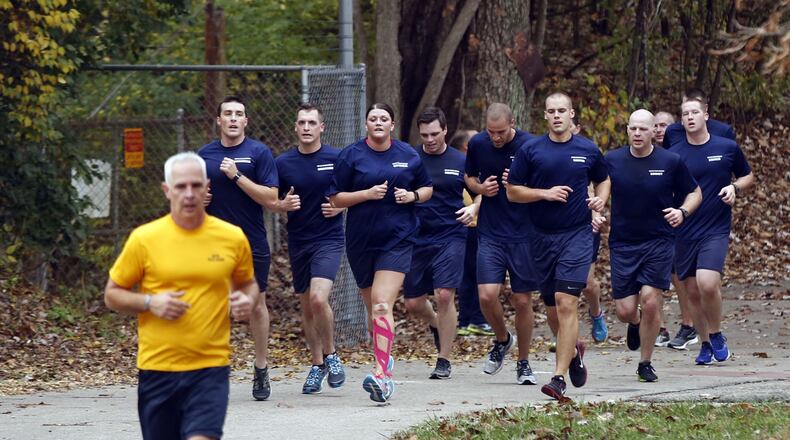But city officials say they want to be prepared if the city receives federal coronavirus relief stimulus funding, because restoring the police recruit class would be a top consideration.
Recruitment has been the main focus of one of the police reform committees, which recently has debated whether to recommend setting a goal of having the police force mirror the diversity of the city’s population within the next 10 to 15 years.
Some community members think such a goal is worthwhile, even if the actual diversity levels fall short.
“I think goals not only are something that try to get us to where we need to go, but they also tell us what we need to do differently to make that happen,” said William Gillispie, a member of recruitment police reform committee.
But other disagree, saying more realistic goals that can actually achieved are the better way to go to make real meaningful change.
The police department will start accepting applications from interested candidates on Monday, and the application period will close on April 26, said Dayton police officer Salli Jones, recruitment administrator.
The city decided to postpone this year’s police class until January of 2022, which is expected to save the city about $800,000, according to city budget documents.
The city also pushed back this year’s fire recruit class from January to August to reduce expenses. The fire class will only take place if the city obtains grant or stimulus funding.
Recruitment applications were last accepted between October and December 2019.
More than 500 applied and 48 candidates remain on the list, officials said.
Jones said an advertising and marketing campaign is getting underway.
Gillispie recently said he was disappointed that the city had not launched an advertising campaign announcing that it is accepting applications.
“We need to have a robust recruitment program, and you don’t wait until the applications start to recruit,” he said. “I know we can’t turn the clock back, but so far I haven’t seen any advertisements.”
He also said he wished city and police leaders would more aggressively work to raise awareness of police job opportunities and the city’s desire to boost diversity on the force.
But city and police officials said they did not expect to have a class this year, and still might not, so they didn’t know they would be taking new applications.
“If we don’t get federal funding, we don’t have a police class this year,” said Dayton Mayor Nan Whaley.
Whaley is co-lead of the recruitment police reform group, which recently has discussed potential diversity goal recommendations.
Committee members have talked about whether to set an objective for the police force to match the city’s racial demographics, possibly within the next decade or decade and a half.
U.S. Census data say Dayton’s population is 37.9% Black and 55.7% white. The police force currently is about 91% white.
The police department is not going to get anywhere close to meeting that goal unless it can significantly change the pool of applicants, and get many more minority community members interested in police careers, Whaley said.
Whaley also said increasing diversity in the police department is going to require community members to step up and agree to help with the work.
The police department loses about 15 to 20 officers each year through attrition, and recent police classes have averaged about 23 recruits, said Dayton police Sgt. Joe Heyob, who is part of the recruitment police reform group.
The city is expected to end this year with about 358 sworn personnel, according to city budget documents shared late last year.
Heyob said the police department would need every police academy class moving forward to have 13 Black recruits to make the force match the diversity of the city within the next 10 years.
“We are going to need 13 (black) officers per class per recruitment cycle ― for about 56% of each class, if we want to make our goal,” Heyob said. “Of that, for the secondary goal, six would have to be black females, which is more than our current total, per class.”
One of the main challenges to improving the police department’s diversity is that its pool of candidate come from across the region, which is not nearly as diverse as the city’s population, Heyob said.
Recruitment committee members were divided over whether they should set such “audacious” and “lofty” goals.
David Fox, a committee member, said getting that many Black police recruits right away is unrealistic and simply will not happen.
“You have to go all the way back to 1973, 1974 to see when they hired more than five Black people at one time on the police force and put them in the academy,” he said. “If you never got over five individuals in the academy over the last 40 years, how do you expect to jump up to 13 every year?”
He said it’s a bad idea to set goals that the police department will never reach. He said he thinks it’s a better idea to have a goal of increasing diversity incrementally, perhaps such as each year.
Committee members are expected to discuss the matter some more at their next meeting.
Committee members also said recruitment needs to be a year-round, full-time effort that does not conclude when the application process closes.
One recommendation developed by the recruitment committee is to create a permanent, full-time dedicated recruitment unit within the Dayton Police Department.
About the Author



